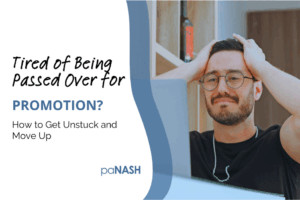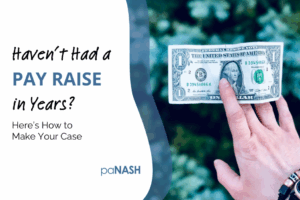|
|
I was sitting at my desk in my office when the email showed up in my inbox. It was another request for an informational interview. (If you don’t know what an informational interview is, click here.)
But this request was different from all the others. It wasn’t the usual lame offer to treat me to lunch or coffee.
As much as I really want to accommodate each request since I’m such a big believer in informational interviewing, I can’t say yes to every request. I don’t always have the time to take away from my clients to fight Nashville traffic for a meeting.
So what was different about the request that caught my eye?
This person offered to BRING ME my favorite hot beverage. It was evident she wasn’t just thinking about herself and what she wanted. Instead, she was taking my time into consideration (along with my hot beverage preference).
She showed up at my office with a hot green tea. I loved that she actually asked me what I like instead of assuming I’m a coffee drinker, because I’m not.
I also loved that she didn’t ask the question, “Can I pick your brain?” Why? Because when I worked in the music industry I quickly learned anytime someone asked me that question it was code for, “Can I have some free advice?”
“Can I pick your brain?” always puts me on guard.
I went on to have a great meeting with this bright and considerate young woman. A month later I hired her as my assistant.
This exchange occurred several years ago, but I tell this story all the time to my clients so they understand the importance of practicing proper etiquette when asking for an informational interview.
(Want to learn proper networking etiquette? Check out my on-demand program The Secret To Successful Networking: How to Do It Naturally and Effectively.)
A better approach
If you’ve inadvertently made the gaff of asking, “Can I pick your brain?” don’t worry. There are several ways to correct your approach.
And if you’re someone who gets the “Can I pick your brain?” question frequently, there are several ways you can respond appropriately, especially if you have to say, “no.”
It’s all listed below in an article written by Darrah Brustein, author, speaker, and consultant (originally published at www.forbes.com). Darrah was nice enough to allow me to re-publish her article here on the paNASH blog.
It’s a must-read for anyone who’s trying to expand their network (which should be everyone!). Enjoy!
14 Ways To Ask And Respond To The Question: Can I Pick Your Brain?
by Darrah Brustein
I’ll share with you here a number of ways you can respond, some which might even turn into a way to get paid for your knowledge.
These tips also translate if you’re hoping to get advice from someone with more expertise in a particular area.
We all have things to offer that are valuable to others and will help them on their path. Sometimes we charge for those; other times, we don’t. Undoubtedly, sharing knowledge is important.
But we get to choose to whom, what, where, when, and how we offer this advice and counsel.
It feels great to be the one who gives this help. It’s nice to share what we know. It’s even touching to reflect back on the times when we needed help and others offered.
But don’t use that against someone to force them into spending time with you. And don’t let that guilt you into having to say yes to everyone either.
Because we each have a finite amount of time and our own priorities, here are some important things to consider when you want to ask someone for help in this way:
1. Be considerate of someone’s time and intellectual property.
Sometimes that means being willing to offer payment or a value exchange. Would you go into a store, grab some merchandise, and walk out? Hopefully not, because that’s theft. So why do we expect people to offer their intellectual property so easily without expectation of payment or value exchange?
2. Consider the depth of your relationship to the ‘brain.’
It’s most likely that someone with whom you have a real relationship will want to help. But when can you consider a relationship to be established? If you’ve emailed several times or exchanged Facebook messages, does that count? What about when you’ve met once? When do you go from stranger to someone for whom I will make time? There isn’t a clear-cut answer as it’s subjective and personal. However, if you feel it’s a grey area, err on the side of caution, if simply for the sake of being polite. If you don’t have a pre-existing relationship, try to get introduced by a trusted mutual contact. The recipient will be much more likely to carve out time for you because of the carryover of trust they have from the connector.
3. Do your homework.
If it’s not possible to be introduced or to ask someone with whom you have an existing rapport, then it’s imperative that you demonstrate in your first contact that you did your homework. Why should that person take the time to help you if you didn’t take the time to extract as much learning as you can about the subject online beforehand, both in general and specifically from any content they already have shared.
Here’s a quick story of hope to insert at this point: one of my business idols is Julie Aigner-Clark, the creator and founder of Baby Einstein. When I published my book on financial literacy for kids, connecting with Julie to understand her journey in the space was of utmost importance to me. I knew no one in common with her, so I spent hours watching videos, reading interviews, and consuming everything I could learn that was already out on the internet about her. Then I wrote a thoughtful, complimentary and concise email via her contact form. I made it clear that I had done my homework, how much I respected her work, why I was reaching out and what my hopes were for spending some time on a call with her if she’d be open to it.
Much to my surprise, less than 24 hours later, I got an email from her welcoming a conversation. She was flattered by my depth of knowledge about her work, and that ingratiated me to her. Shortly after, we spoke for an hour, then several times after that. And I was careful to ask only questions of her whose answers I could not find online.
4. Don’t be insulting by presuming that coffee or lunch is a good exchange.
I didn’t ask her for time in person, and here’s why. When you add up the amount of time it would take for someone to commute to and from a given location and share their ideas and expertise with you, rarely will they consider your offer to pay for coffee or lunch a reasonable one. It can come off as insulting, and will quickly close a door to that interaction.
5. Intend to pay or offer value in some way.
If you’re not willing to pay for someone’s time, or offer value in some way before you want to take it, consider if there’s another way to obtain the information you’re seeking. If you can’t afford to pay, be upfront about your desire to give before you take, and suggest a way you could be helpful without paying.
6. Beware of sounding presumptuous.
Don’t craft your message as though their saying yes is a foregone conclusion. Saying something like, “When would be a good time for us to connect for coffee?” in your first correspondence is presumptuous and not respectful.
Now that we’re clear on how to ask someone for their time and advice properly, let’s consider how to reply to these types of requests.
7. It’s okay to say no.
Here’s a piece I wrote about saying no. It’s a helpful starting point for any time you want to decline an offer respectfully.
8. Make email templates.
Consider making email templates for these requests, using a tool like MixMax to auto-insert them into your emails. Ignoring them often leaves me feeling guilty, so this is a great way to reply respectfully without taking too much time.
9. Create a buffer and save time with a virtual assistant.
If you need to put a barrier between you and the asker, or if you get too many requests to handle by yourself, get an inexpensive virtual assistant to intercede. It can be a lot easier for this person to say no, to offer a resource you’ve already produced, or to share your consulting rate.
Or, before handing it off, you can reply by introducing the asker to your assistant. He or she can get a specific agenda or purpose out of them and offer 15 minutes to see if they might translate into a client.
10. Offer pro bono work.
You may want to offer some pro bono consulting. If so, determine what your own boundaries are for this.
For whom will you always make time? For whom not? Allow for some flexibility. Sometimes, you’ll surprise yourself with the ones to which you’ll say yes, because the asker was sincere, authentic and demonstrated that she did her homework, respected your time and was clear in her ask.
11. Refer the request to someone or something.
It’s always great to refer the requester to someone else who is a better fit, or to someone else’s relevant content.
Or, if you have content which you’ve already created on the subject, point them there.
If you get a lot of these requests asking the same thing, write a LinkedIn or Medium post to publish the common answer(s) and then direct people to that. It will also help to solidify your thought leadership in that area.
12. Get paid.
You can try to convert the asker into a client by saying, “I’m at capacity right now, so I’m not taking any meetings. As I’m sure you can appreciate, sometimes you have to put your head down and get work done 🙂 If you’re interested in becoming a client, I can send over info on that. If it’s simply a quick question you have, feel free to email it, and I can see about answering it by email.”
Or, “I’m happy to connect, and I charge $X/hour for consulting. Please let me know if you’d like to set up a time to do so.”
Or, “I’m not available for coffee, but you should really consider checking out my _____ (your product or service). I designed it to help people like you in this exact situation!”
You can also create an hourly or flat-rate consulting platform for these requests. Make the dollar amount worth your time, so if someone buys it, you’re happy to do it.
13. Implement office hours.
If it’s best for you, create ‘office hours,’ which is a specific slot of time that you use for these conversations. It will keep you sane, as well as weed out people who aren’t open to work around your schedule when they’re asking to glean from you.
I’ve found that most of these requests disappear when I offer one specific time frame that’s convenient for me, offer to do it for an exchange of payment, or ask for them to be more clear about their question(s) before we hop on a call.
14. Make it personal.
Sometimes someone reaches out it in a manner that is complimentary, but it sounds like a social call, and doesn’t specify that they want to ‘pick your brain’. However, you know that’s what they want. Reply by saying, “I’ve made a personal rule not to take any meetings when I haven’t made time to spend with my best friend recently (and she and I haven’t connected in ages due to my schedule). I so appreciate your kind words, and hope you understand why I need to pass.”
Ultimately, respect your time and put a value on it. Don’t be afraid to ask for payment, to say no, or to respect your own boundaries. And if you’re in the market to ‘pick someone’s brain,’ put yourself in her shoes to position yourself for success.
Thank you again to Darrah for allowing me to re-post this article!
Related Posts
- How to Be Realistic About Networking
- How to Write Networking Emails That Will Get Responses
- Want To Be a Public Speaker? Beware of the “Exposure” Bait
- Stand Up For Your Worth






